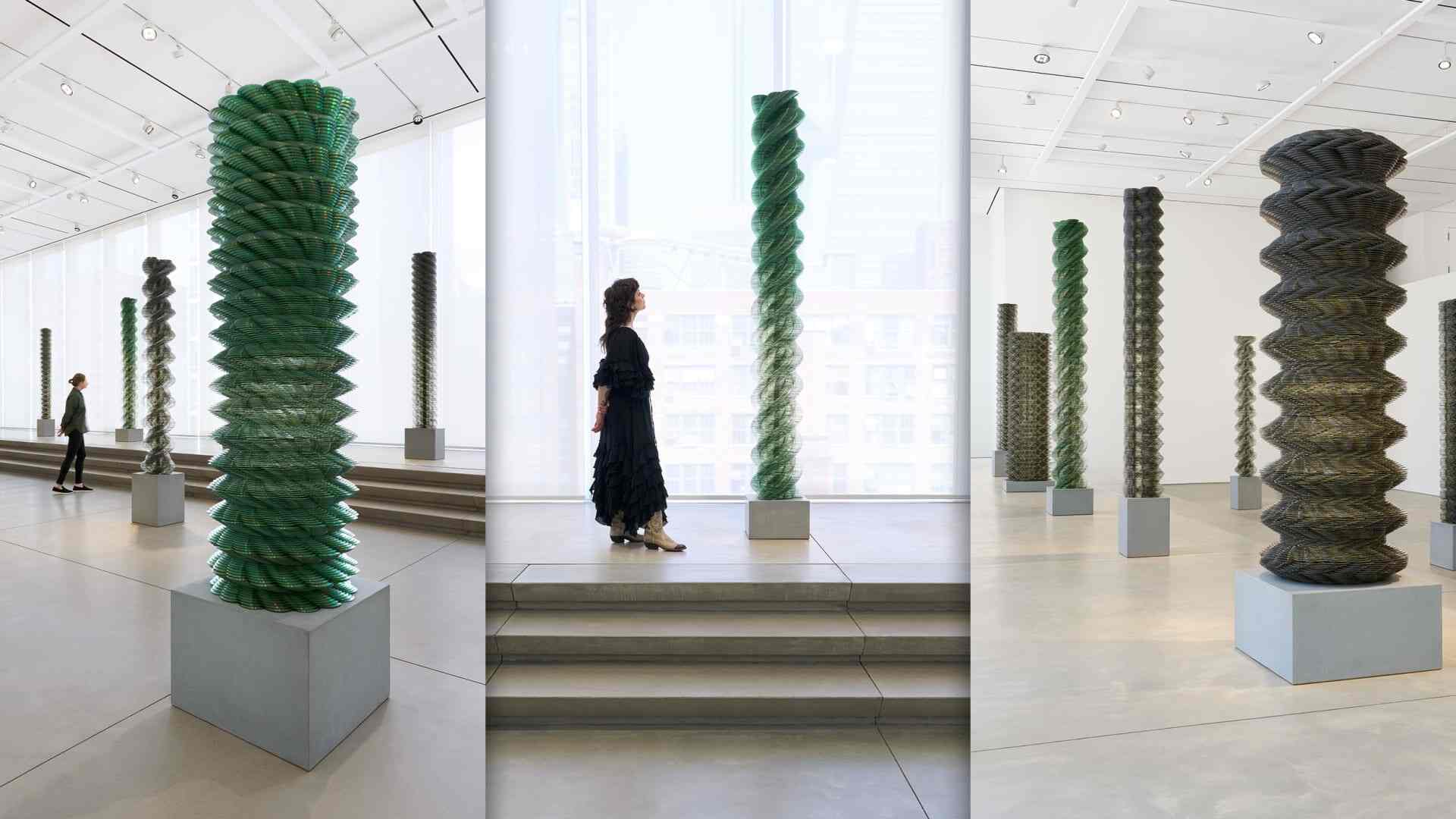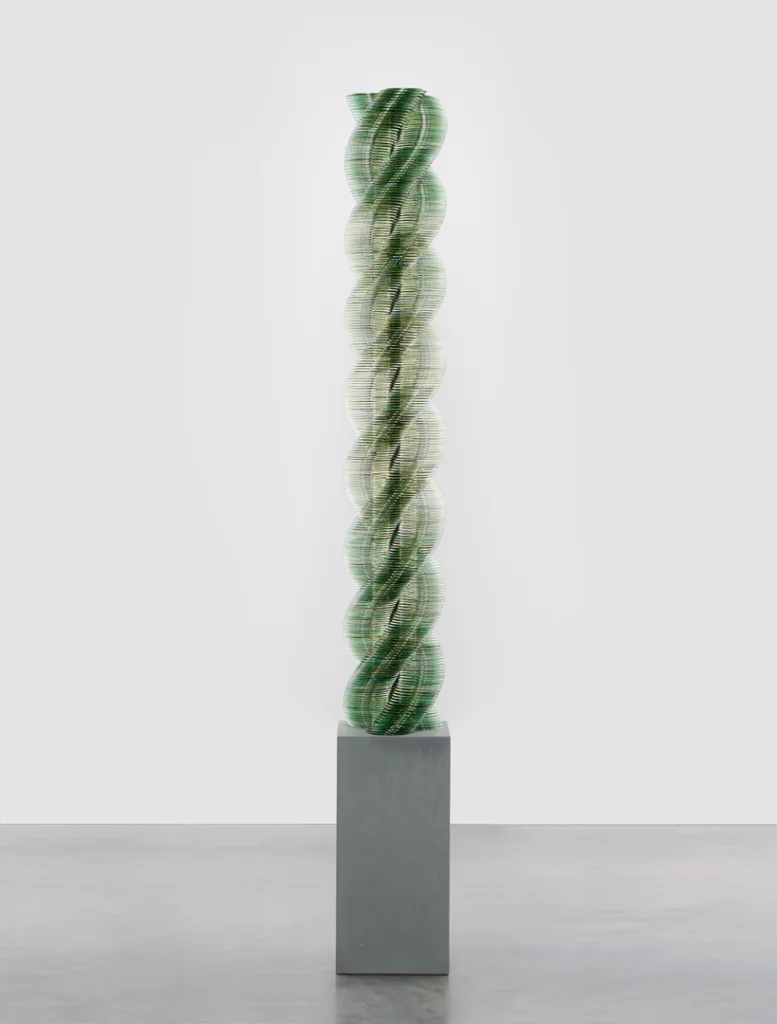- | 8:00 am
These stunning sculptures are made of thousands of CDs
Tara Donovan’s new exhibition, ‘Stratagems,’ gives new use to a forgotten medium.

At New York’s Pace Gallery, a series of 11 iridescent green sculptures flicker in the sun. The structures tower over viewers, ranging from seven to 11 feet tall, and spiral upward in intricate patterns. They’re so detailed, in fact, that it requires a double take to realize they’re entirely made out of CDs.

The exhibition, titled Stratagems, is on view from May 3 through August 16. It’s artist Tara Donovan’s 11th solo show with the gallery. Donovan’s signature style often revolves around taking a single, ordinary object—like a pencil, a button, a cup, or even a Slinky toy—and accumulating it in layers until it becomes something entirely unrecognizable. In one memorable 2015 exhibition, she created 10 mountainous peaks out of a million index cards.
According to Pace’s chief curator, Oliver Shultz, Donovan’s concerns with Stratagem were primarily formal and sculptural. However, the choice of CDs as a medium also gestures to the rapid acceleration of tech innovation and the waste it leaves behind.

“There was a time not so long ago when the CD-ROM represented a futuristic medium,” Shultz wrote in an email to Fast Company. “Now, it’s such an outmoded format that it can be difficult to find a computer that retains the ability to load data from a CD! [. . .] Part of what matters about the work is precisely that they rescue the future of the past, giving new life and new meaning to something that would otherwise be destined to find its way into a landfill.”
Donovan needed thousands of CDs for the sculptures—and she didn’t want to buy any of them new. Initially, she scoured secondhand shops and eBay for the used discs, before eventually finding someone who specialized in tracking down the CDs for her. Shultz says she had to create something of a “small cottage industry” just to have enough materials to get started.

Once Donovan had all of the CDs she needed, much of the project’s labor involved simply removing them from their packages. Then, she could finally begin deciding how to fit them together. The first step was organizing the discs by color. Next, Shultz explains, Donovan experimented with different patterns both physically and on computer models to decide what each column should look like. Finally, she assembled the structures in modular pieces, careful to hide all of the CDs’ labels. Some of the sculptures take the shape of a helix, while others have a woven quality.

“Everything was done by hand,” Shultz wrote.
An invisible internal support system keeps the lofty columns anchored to their concrete bases, although, as in any architectural project, Donovan had to find the perfect height for each in order to avoid compromising its stability. The resulting objects play with light in interesting ways; both reflecting it and refracting it between surfaces, causing tiny rainbows to dance across them. In one moment, Shultz says, the works appear to be heavy and solid, whereas in the next they might seem to dissolve like a mirage. It’s an apt image for considering what the CDs themselves have come to represent.
“Data is ephemeral—it can only be experienced when translated through another medium,” Shultz wrote. “In Tara’s works, huge quantities of data are entombed inside these sculptural forms, which evoke architectural constructions at once futuristic and ancient.”





































